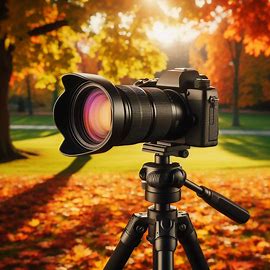

A digital camera captures still images or videos and stores them in a digital format. Unlike traditional film cameras, digital cameras use an electronic image sensor to capture light and convert it into digital data.
This allows users to immediately view, edit, and share images without the need for film development.
Photography: Digital cameras are used for both amateur and professional photography, allowing users to capture high-resolution images.
Videography: Many digital cameras can also record video in HD or even 4K resolution.
Focuses light onto the image sensor.
Converts light into an electrical signal. The two most common types of sensors are CCD (Charge-Coupled Device) and CMOS (Complementary Metal-Oxide-Semiconductor).
Used to frame and review images.
Images are saved on memory cards, such as SD or CompactFlash.
Handles the conversion of the raw data from the sensor into a viewable image format, such as JPEG or RAW.
You can instantly see the captured image and decide if retakes are necessary.
Thousands of images can be stored on a single memory card.
Digital images can be quickly transferred to computers or shared via the internet.
Digital cameras consume more power than traditional film cameras.
While most offer excellent image quality, cheaper models or phone cameras may not match the quality of high-end professional cameras.

Small, lightweight, and easy to use, compact cameras are designed for casual photography. They often feature automatic settings, making them ideal for beginners.
Bridge cameras fill the gap between compact cameras and DSLR/mirrorless models. They offer more advanced features like manual controls and larger zoom ranges but still have a fixed lens.

DSLR cameras use a mirror and prism system to allow the user to see through the lens while composing the image. They have interchangeable lenses and are favored by professional and enthusiast photographers for their versatility and image quality.
Mirrorless cameras lack the mirror system found in DSLRs, making them more compact while still offering high image quality and interchangeable lenses. They use electronic viewfinders or the rear LCD screen to compose images.